June 20, 2025 | 23:33 GMT +7
June 20, 2025 | 23:33 GMT +7
Hotline: 0913.378.918
June 20, 2025 | 23:33 GMT +7
Hotline: 0913.378.918
At the workshop Forest Carbon Market: Post COP27 and Transformative Pathway for Vietnam held on December 20, experts discussed and shared ideas on the pathway to reducing greenhouse gases (GHG) and the carbon trade in the forestry sector in Vietnam.
Article 139 on the organization and development of the carbon market is a provision in the Environment Protection Law 2020, which took effect on January 1, 2022, regulates the carbon market, including the exchange of development quotas of GHG emissions and carbon credits obtained from carbon credit clearing mechanisms, both domestic and foreign, of which Vietnam is one of the member countries under bilateral and multilateral agreements or voluntary.
To specify Article 139 of the Law on Environmental Protection, the Government issued Decree No. 06 dated January 7, 2022, setting a roadmap for developing the domestic carbon market.
Mr. Nguyen Van Minh, a representative of the Department of Climate Change, Ministry of Natural Resources and Environment shared that the roadmap comprises two periods. In the first phase from now to 2027, the ministry is assigned to work with the Ministry of Finance to implement a series of activities including developing relevant regulations to establish and pilot a quota trading floor for GHG emissions and domestic carbon credits from 2025 to 2027. After being assessed on the effectiveness that it would bring, the exchange floor will be officially operated from 2028.
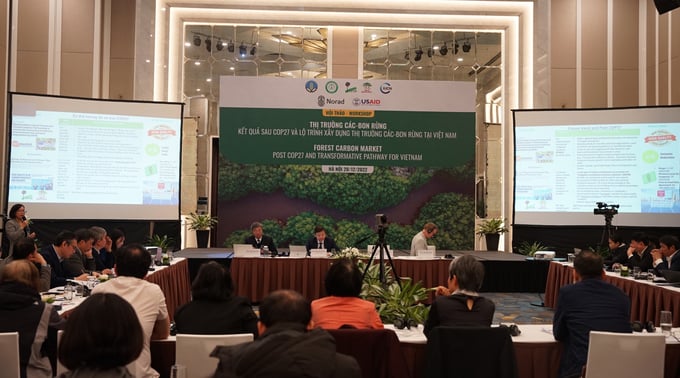
Workshop "Forest Carbon Market: Post COP27 and Transformative Pathway for Vietnam" is held on December 20.
On this trading floor, GHG emissions are distributed to large emitters and enterprises as stipulated in the Prime Minister's Decision No. 01/2022/QD-TTg on the list of GHG-emitting sectors, and establishments required to conduct a greenhouse gas inventory. Accordingly, 1,912 enterprises from five main emission sectors and establishments on this list must determine their emissions and carry out an inventory of GHG.
Based on factors such as the emissions of each enterprise, the target of reducing greenhouse gas emissions of Vietnam committed in the Nationally Determined Contribution (NDC), and the target of each sector, MONRE will assume the prime responsibility and coordinate with relevant Ministries and sectors to determine GHG emission norms per product unit of each field. From there, it allocates GHG emission quotas to each enterprise in this list to reduce emissions.
Each enterprise has a certain allowed emission level, if it exceeds the threshold, it will have to buy more quotas from the state, from other units that do not use it up, and carbon credits from credit exchange to offset.
According to Minh, businesses are limited to buying up to 10% of the quota, so that they can take initiatives in mitigating GHG emissions during their business operations.
Offsetting carbon credits is a mechanism for enterprises to develop programs and projects to reduce greenhouse gas emissions, thereby converting them into carbon credits to be exchanged on the carbon market.
The total forest area of Vietnam is about 14.7 million hectares, the forest coverage reaches 42%. Currently, 60% of the total forest area is directly managed by the state, and 40% of the state forest area is allocated to households, individuals, and organizations for management.
It is estimated that forests absorb an average of 69.8 million tons of carbon (CO2) each year, and natural forests and plantations store 612 million tons of carbon. Of the 12 main types of forests, evergreen leafy forests, mainly natural forests, account for about 55% of the carbon stocks in the forest's biomass types, 20% of planted forests, 11% of mixed forests, and the rest from other forest types.
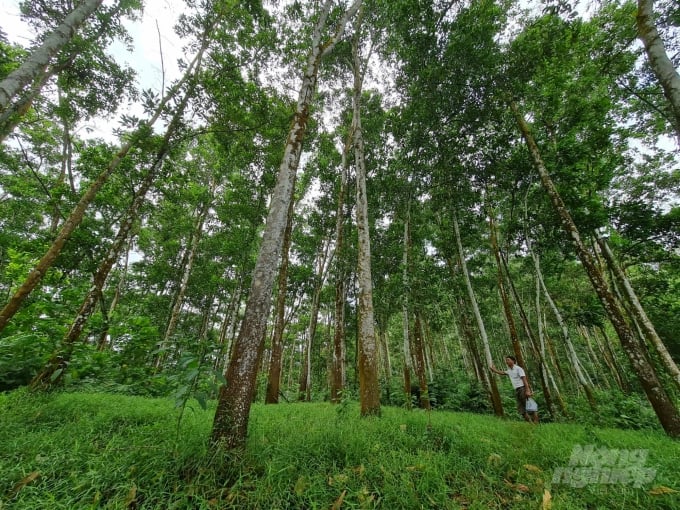
Of the 12 main types of forests, evergreen leafy forests, mainly natural forests, account for about 55% of the carbon stocks in the forest's biomass types. Photo: Hoang Anh.
With these figures, Mr. Vu Tan Phuong, Director of the Vietnam Forest Certification Office (VFCO) believes that it is advisable to focus on protecting natural forests, and especially applying technological advances to planted forests to help increase wood quality and carbon sequestration.
“Average emissions per year in the period 1995-2000 are 55 million tons, 2000-2010 are 62 million tons and 2010-2020 are 31 million tons. Vietnam has made many efforts to reduce emissions through forest conservation management, but looking deeper, the source of emissions from forest degradation is very large. All activities affecting the forest such as forest conversion, deforestation, farming, and burning of forest biomass cause emissions," said Phuong.
Forestry and land use are the areas that will reduce greenhouse gas emissions under NDC 2022. Solutions to reduce agricultural emissions will focus on two main approaches: reducing emissions and increasing absorption in agroforestry issues, and sustainable forest management...
The VFCO representative assessed that the Environment Protection Law 2020 is a big milestone marking the concretization of commitments, especially NDC. But in the forestry development strategy, it is necessary to focus on increasing the productivity and quality of forests to meet the domestic demand for processed wood. Since no land is left to expand the forest area, forest cover needs to be maintained at 42%. The pressure on forests is huge due to socioeconomic development efforts, so it is necessary to focus on planted forests.
Currently, Vietnam is participating in transactions on the voluntary carbon market, through projects, programs, and carbon standards based on its own "rules of the game". However, Mr. Phuong said that there should be a trade exchange mechanism with clear regulations on buyers, sellers and emission ceilings to build a compulsory carbon market like other countries have done.
“The creation of regulations will help Vietnam fulfill its commitment to reduce emissions to net zero by 2050, if we do not have the tools and policies, it will be difficult for us to achieve these goals,” he said. Phuong said.
Translated by Dieu Linh
![Turning wind and rain into action: [10] Advancing accessible climate services for farmers](https://t.ex-cdn.com/nongnghiepmoitruong.vn/608w/files/linhnhp/2025/06/20/1911-z6704423696987_15fd32ffc26d590d204d520c9dac6786-nongnghiep-161854.jpg)
(VAN) Not only does it help farmers 'avoid droughts and rains,' the development of agricultural climate services also enhances their ability to proactively adapt to a rapidly changing climate.
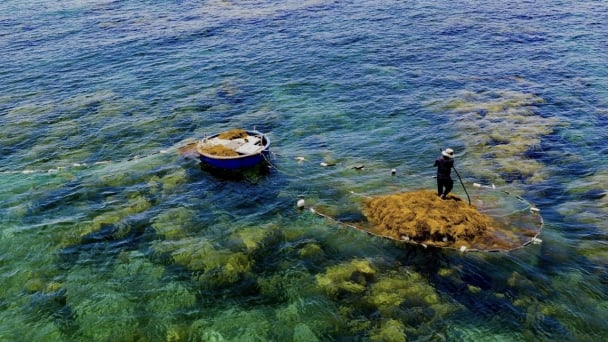
(VAN) With international assistance, the harvesting of sargassum seaweed in Quang Ngai has become increasingly regulated, thereby safeguarding marine life and ensuring the stability of coastal communities' livelihoods.
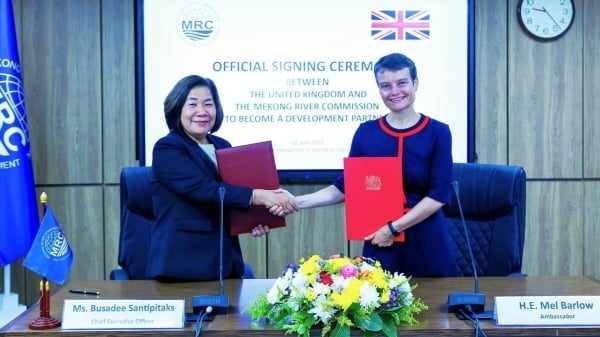
(VAN) On June 19, the United Kingdom officially became a Development Partner of the Mekong River Commission.
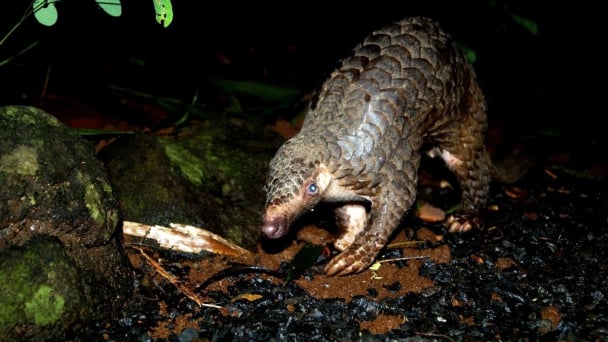
(VAN) Biodiversity is being threatened by traditional remedies made from wildlife. Traditional medicine and humans must change to live in harmony with nature.

(VAN) Agrifood investment and finance solutions for people and the planet.

(VAN) Microplastic contamination has become pervasive in seafood, posing unprecedented challenges for food safety and marine ecosystems.

(VAN) Proactively using vaccines, combined with transport control and enhanced surveillance, is the only viable path toward biosecure and sustainable livestock production in Vietnam.